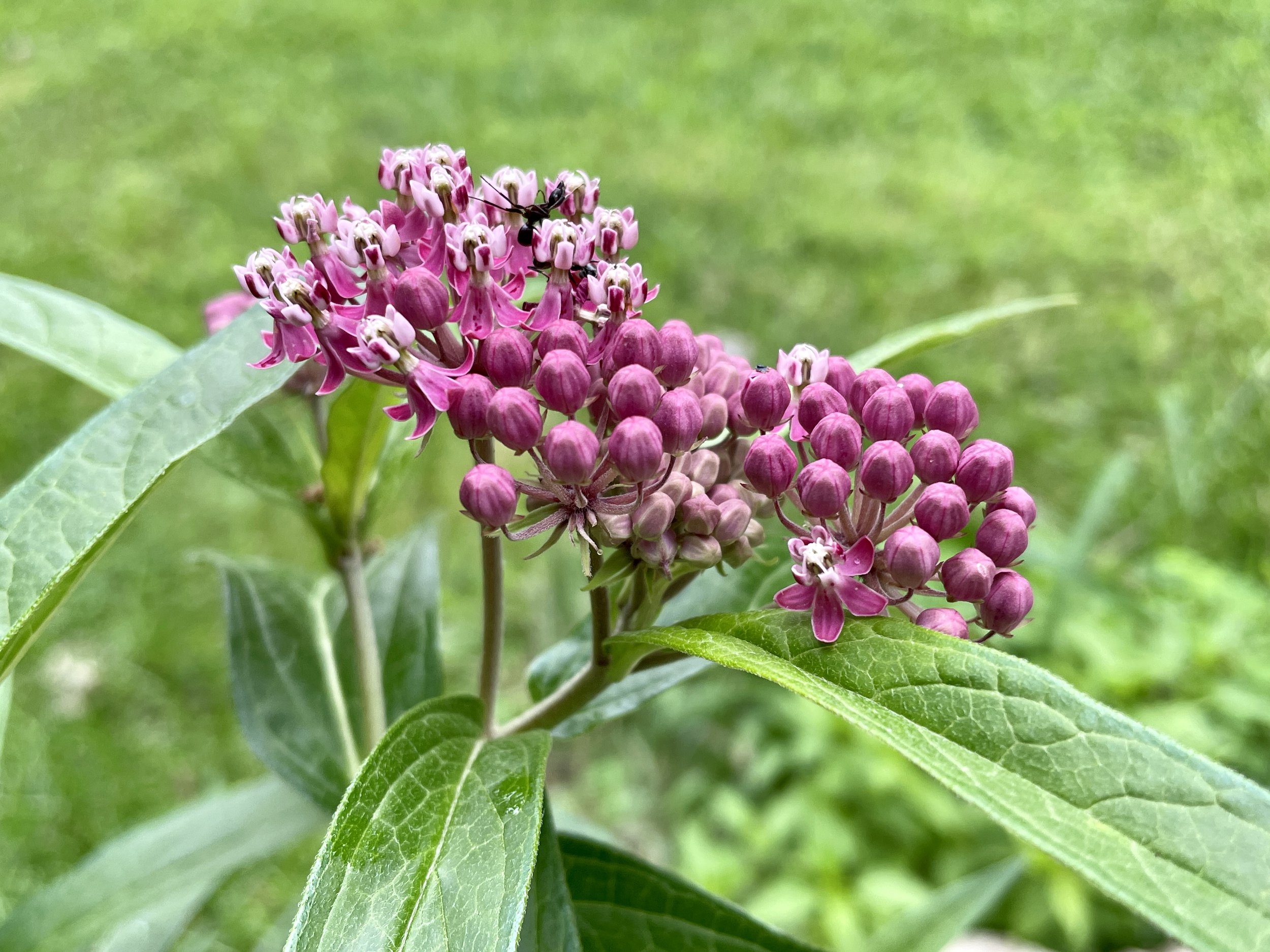
Swamp milkweed
Asclepias incarnata
-
ABOUT
Grows well in sun to part shade, medium to wet soils, grows to 3’ tall, and has pink flowers that bloom late summer. An appropriate milkweed for garden spaces as it does not spread like common milkweed (Asclepias syriaca). Birds will use the silky fluff (the coma) from the seeds to line their nests. Is a larval host for monarch butterflies (Danaus plexippus) and deer do not prefer to eat it.
-
CULTURAL IMPORTANCE
“...the Rarámuri, believe that when we leave this life our iwí, our spirit, transforms into a butterfly…It is understandable, then that species of milkweed are special to [the Rarámuri] as well as to many North American Indians, who see butterflies as symbols of the cycles of life.” - Enrique Salmón, Iwígara: The Kinship of People and Plants
-
WHY COURTNEY LOVES IT
I love swamp milkweed because there are few other plants on which I have observed the rich and abundant insect life of more than that of the milkweeds. Watching the big clusters of milkweed tussock moth caterpillars (Euchaetes egle) grow hairier by the day, the colonies of oleander aphids as they are tended by ants who love to eat their honeydew and always the voracious monarch caterpillars with their black, yellow and white stripes. Even with all these insects feasting on it, it continues to bloom and then provide nectar to numerous other bees, butterflies and moths. So much to observe!

